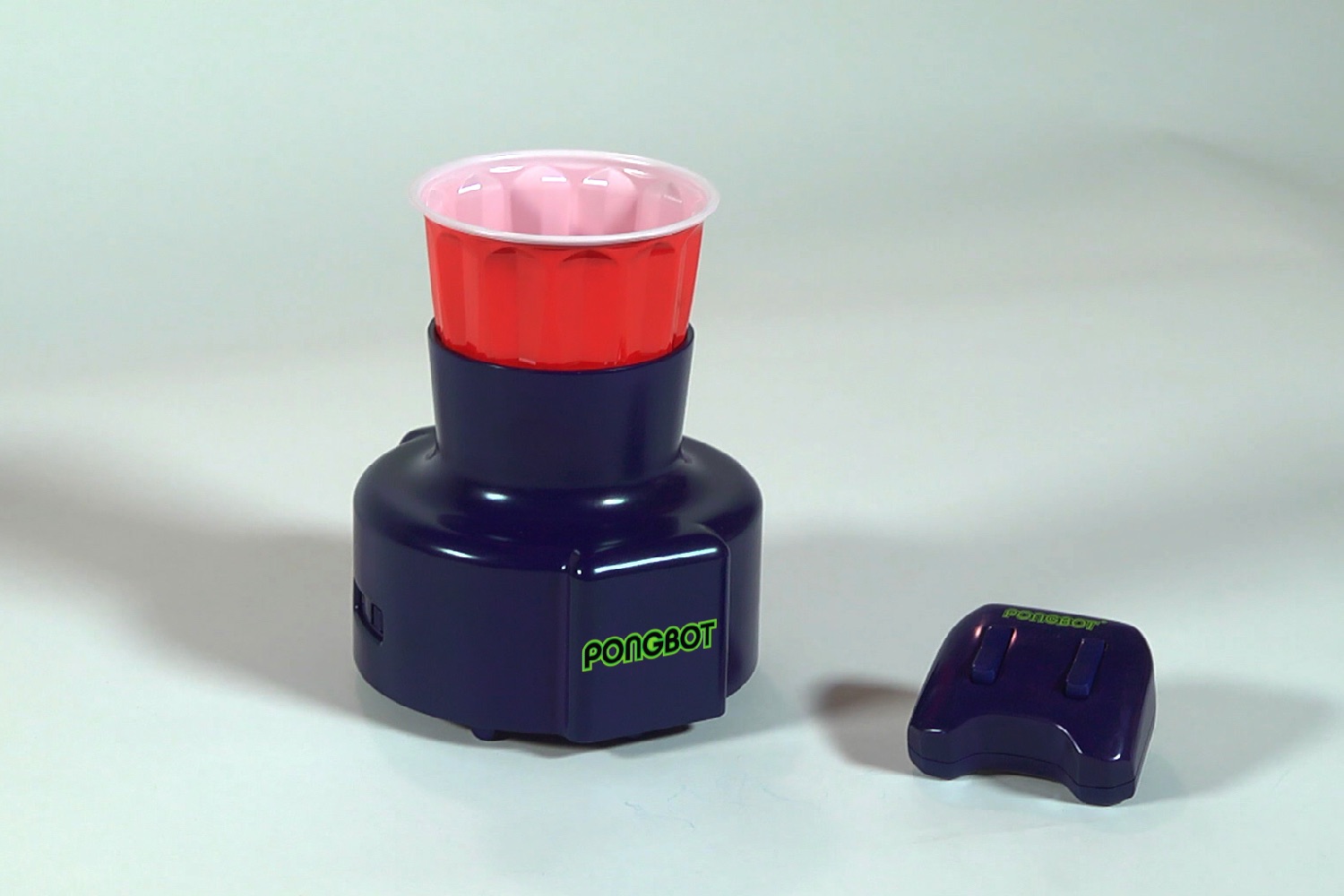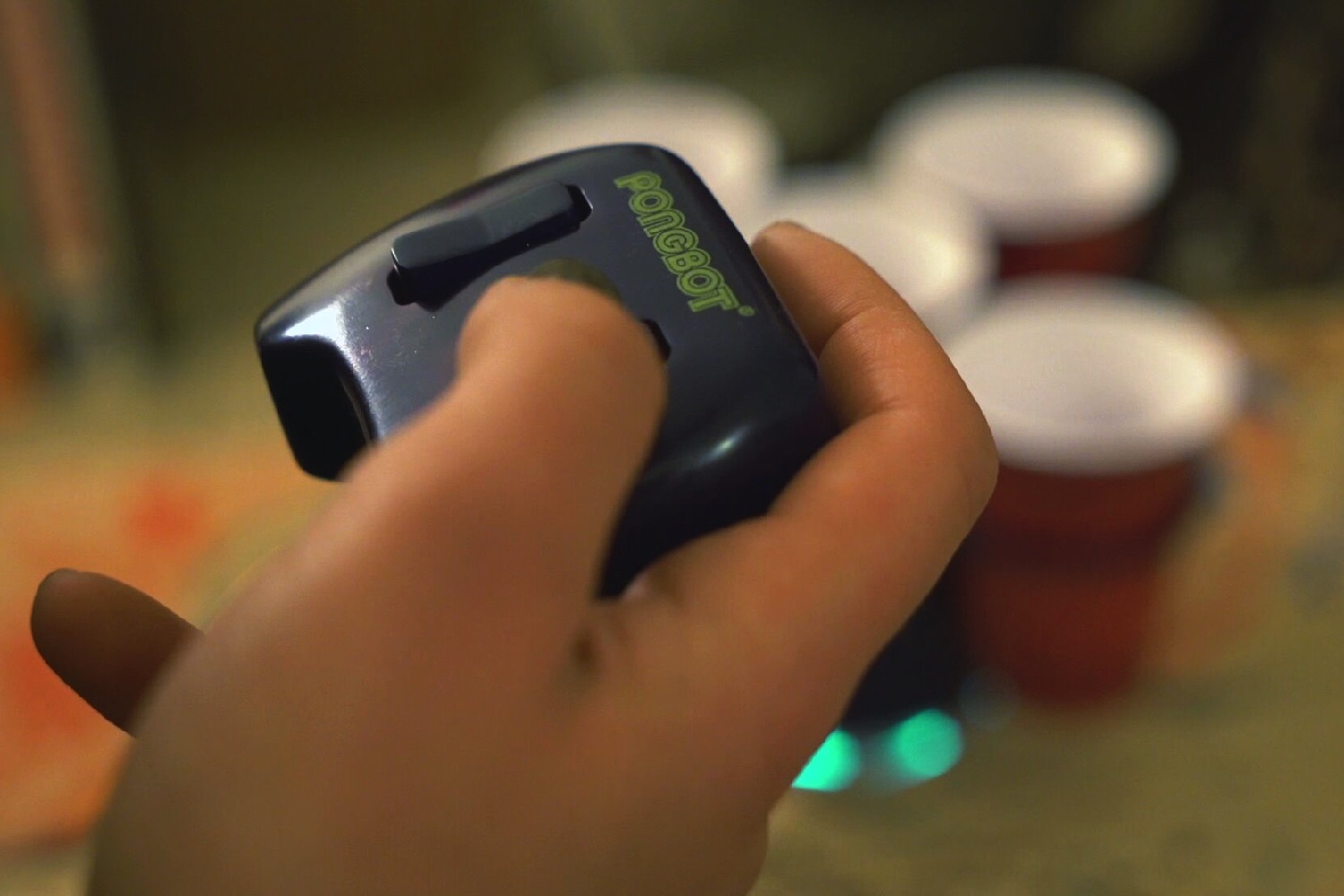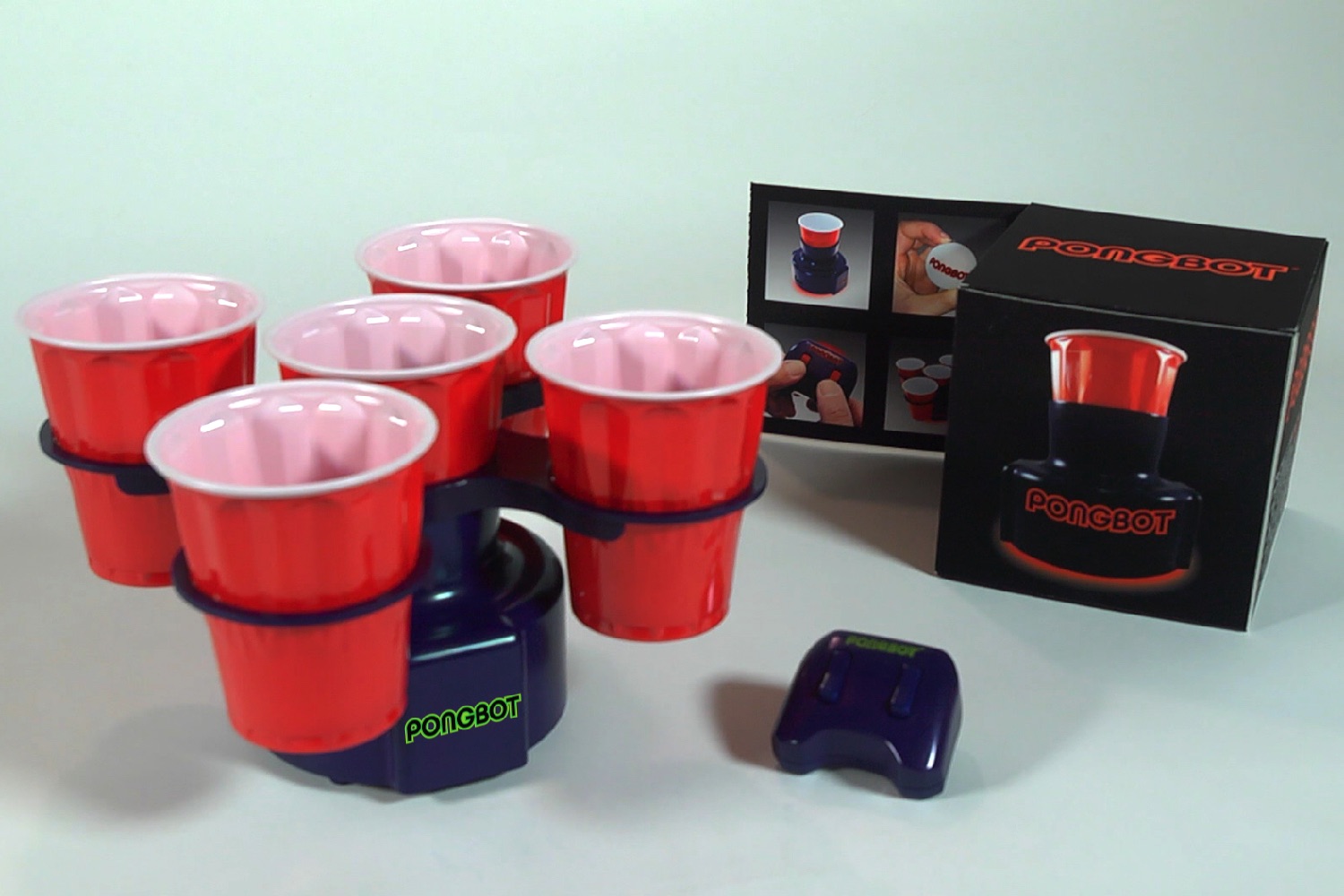“Beer pong is played everywhere,” co-creator Jayson Esterow told Digital Trends. “There’s even a World Series played in Vegas. It was time someone came up with a way to make it a bit tougher.”
Like the best remixes of classic games, Pongbot doesn’t tamper with a proven formula too much. You still throw ping pong balls into cups and (though it’s not explicitly mentioned on the Kickstarter page) presumably still take drinks throughout play. The difference is the fact that the robotic cup holder will move with you — controlled either via remote in “Manual” mode, or in a more freewheeling “Auto” mode.
“It’s all about making beer pong a little more skilled and fun, versus trying to hit a stationary target,” Esterow said. “It’s a lot of fun in both modes. Initially we had thought [Pongbot] would just move from side-to-side, but that would make it too too easy. In ‘Auto’ mode you’re contending with random movements: it might start going forward a bit, then left, then right, then spin. You really can’t predict what it’ll do.”
What it hopefully won’t do, he assures Digital Trends, is fall off the edge of the table — since Pongbot boasts edge-sensing technology similar to a gadget like the Roomba vacuum cleaner.
Roomba, as it turns out, isn’t a bad point of comparison. Recently a video went viral online, showing a D.I.Y. version of Pongbot created by some college students, utilizing their trusty robot cleaners. While Esterow commends the creativity, though, he’s not worried that Pongbot has met its match.
“The most obvious advantage is the price,” he noted. “A Roomba costs $350 each. Our Pongnot costs $40. For the kids who are playing this with two Roombas, that’s the equivalent of $700 right there. It’s easy to carry our devices to a bar, but nobody’s going to take their two Roombas to one. Finally, I think the remote control function we include is really important, and adds a lot of fun.”








